If you love roses and admire their beauty, then planting your own roses in your garden is sure to bring hours of joy and delight. But before you get started, it’s important to consider the best time for planting rose bushes – if you get it wrong, chances are they won’t survive! In this blog post we’ll take a look at when the optimal time for planting roses is so that you can give them the best chance of flourishing into romantic and fragrant blooms. We’ll discuss what type of climate and weather conditions are favorable for planting brightly colored Hybrid Teas or classic shrub roses, which varieties do best during different times of year as well as some planning tips so that each variety will bloom at its peak season. Read on to find out how expert green thumbs plan their rose gardens for success!
What Are the Most Popular Varieties of Roses?
Roses are one of the most popular flowers in the world, and their varieties are almost endless. From classic blooms like red roses to unique hybrids like ombre-colored varieties, there’s a rose for everyone and every occasion. But which types of roses top the list? Here is a closer look at some of the most popular varieties:
- Red Roses: Red roses are classic symbols of love and passion, and that’s why they make a popular gift choice. The traditional red rose is a hybrid tea rose with deep crimson petals, but there are other varieties of red roses, too. David Austin English roses, for example, have an old-fashioned look with cupped petals in shades of pink, red, and white. [1]
- White Roses: White roses are often associated with purity, innocence and new beginnings. There are many varieties of white roses available, ranging from hybrid teas to David Austin English roses. The classic white rose is sometimes called a bridal rose due to its traditional use in wedding bouquets as a symbol of love and fidelity.
- Pink Roses: From soft blush to deep rose, pink roses are a popular gift choice for anniversaries, birthdays, and other special occasions. They are also a romantic gesture of admiration and gratitude. The most common varieties of pink roses are hybrid tea roses, but there are also beautiful David Austin English roses available in shades of salmon and coral.
- Yellow Roses: Traditionally a symbol of friendship, yellow roses are bright and cheerful blooms that make thoughtful gifts for any occasion. Hybrid tea roses come in shades from light lemon to deep goldenrod, while David Austin English roses offer variations with hints of peach or apricot.
- Ombre Roses: Ombre roses combine two or more colors in one bloom, often transitioning from pale pink to rich red or white to yellow. They make a unique and eye-catching gift for any occasion, and they’re sure to leave a lasting impression. [2]
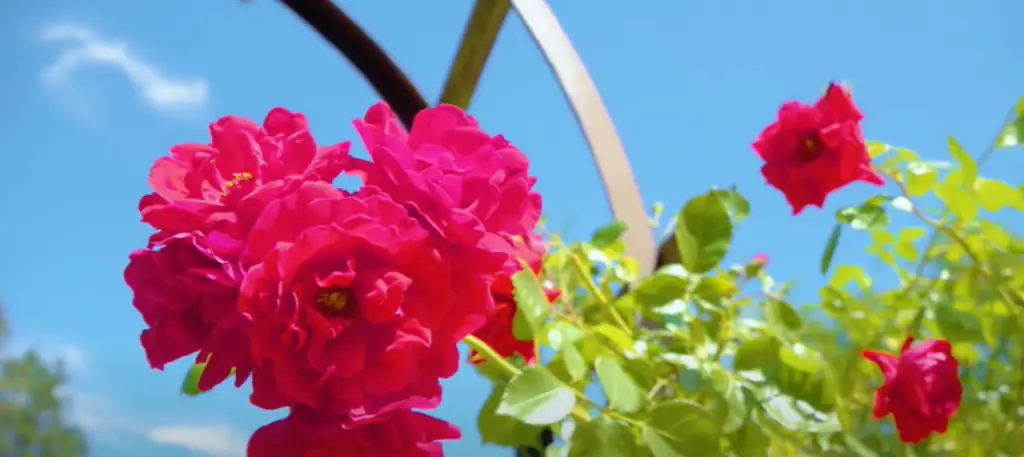
Are Roses Hard to Care for?
Roses are among the most beautiful and sought-after flowers in the world, but many people worry that they will be too difficult to care for. While it’s true that roses require more attention than some other plants, growing them is not as challenging as you might think. As long as you understand their needs and follow a few simple guidelines, you can create a stunning rose garden of your own. Here are some tips to ensure success when caring for roses:
- Watering: Roses need lots of water, but they must not be over-watered or their roots will rot and they will become diseased. Make sure you water the soil around the plant’s base regularly, allowing it to reach a few inches deep. In hot weather, roses may need to be watered twice a day.
- Fertilizing: Roses should be fertilized every month or two with a balanced fertilizer that is specifically formulated for roses. You can also add well-rotted manure or compost to the soil around each plant twice a year.
- Pruning: Pruning will help encourage new growth and keep a rose bush healthy. Prune back dead or diseased branches, and remove any old flowers. To stimulate new growth, prune the stems, but make sure not to prune too much as this can stress the plant.
- Growing Support: As roses grow, they may need support to stay upright. Provide stakes for large plants and trellises for climbing varieties.
- Pest Control: Rose bushes are prone to pests such as aphids and beetles. Monitor your plants regularly for signs of infestation, and use approved insecticides if needed to control the problem. [3]
When to Plant Roses?
Roses are a beautiful and fragrant addition to any garden, but they require careful timing for optimal growth. The best time to plant roses is between late winter and early spring when the soil is beginning to warm up.
Spring
When planting roses in the spring, make sure you take into account your local climate and soil. Roses should be planted when the ground is warm enough to work with and no longer frozen. Since roses need plenty of water to thrive, plant them before any major rainfall to avoid drainage problems. Make sure that you prepare the soil by adding lots of organic matter and plenty of fertilizer before planting.
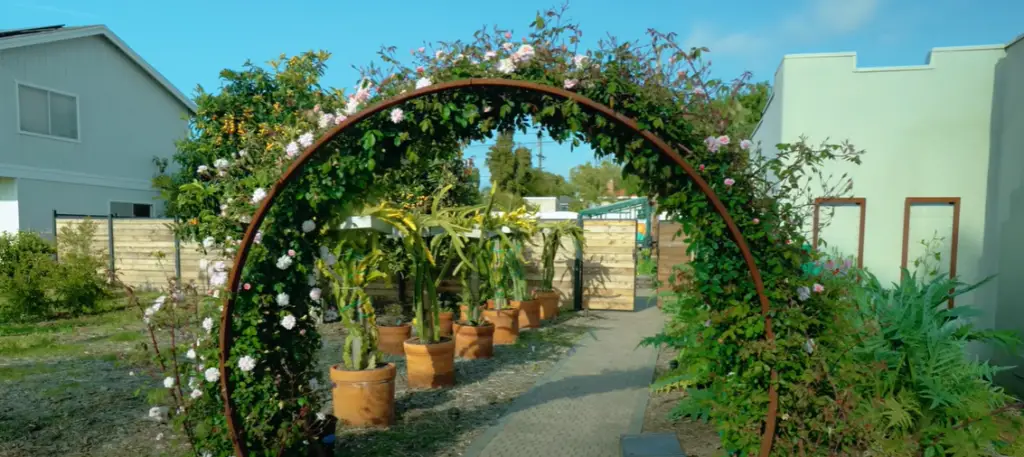
Summer
Once your roses are planted, they will need regular care throughout the summer season. Water them deeply each week and fertilize once more around mid-summer to promote strong growth. Make sure to keep weeds away from your roses at all times, as they compete with them for resources and can harbor diseases that can damage your roses.
Fall
As fall approaches, it’s important to start preparing for the winter season. Prune back any dead or damaged branches and mulch around the base of each plant to protect them from extreme temperature changes. Once winter arrives, you should cover your roses with a blanket or burlap fabric to protect them from wind and frost.
Winter
Winter is a dormant period for roses, so no new growth should be expected until spring arrives. Make sure to keep your roses pruned and mulched throughout the winter months to ensure they stay healthy and vibrant in the coming season. With proper care, your roses will come back strong each spring! [4]
How to Plant Roses?
Planting roses is a rewarding experience, and when done correctly can help you create an attractive and vibrant garden. Knowing how to properly plant your roses will ensure that they last for many years, giving you plenty of blooms and enjoyment.
Step 1: Prepare the Soil
The first step in planting roses is to prepare the soil. Before you start digging, make sure your soil has good drainage and remove any large rocks or debris that could block roots from developing properly. If needed, add organic matter like compost or garden soil to help with water retention and boost nutrients for your roses.
Step 2: Select Your Location
Once you’ve prepped the soil, it’s time to select a location for your roses. Choose an area that gets partial sun and is protected from strong winds or other weather conditions. Planting in groups of three or more will help create a fuller look and provide ample room for growth.
Step 3: Planting the Rose
When you’re ready to plant, dig a hole that is slightly larger than the root ball of your rose. Place the rose in the opening so it sits at the same depth as it did in its original container, then backfill with soil. Once planted, water thoroughly and mulch around the base of each plant to help retain moisture and keep weeds at bay.
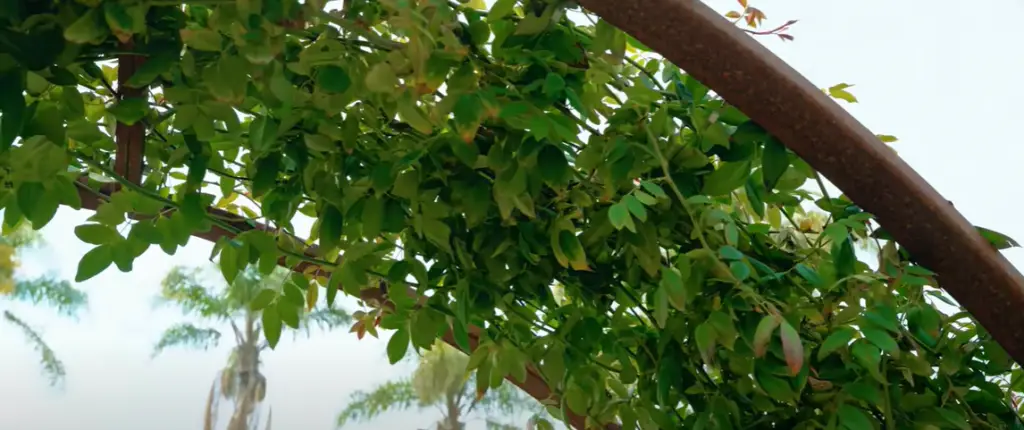
Step 4: Ongoing Care
Once planted, regular pruning and maintenance is key to keeping your roses healthy. Deadheading spent blooms and removing any diseased stems can help reduce the spread of pests or diseases in the garden. Additionally, be sure to water regularly (at least once per week) and feed with a slow-release fertilizer every couple of months for optimal growth.
Tips & Tricks
- Roses require at least 6 hours of sunlight per day. If yours are not receiving enough sun, consider moving them to another spot in your garden.
- Don’t over water! Soak the soil thoroughly, but ensure it has time to dry out between waterings. A moisture meter can help you gauge how often to water.
- Pest control is important – check plants regularly for signs of insects or disease and take action as soon as possible.
- If you’re looking for a more natural approach, companion planting can help deter pests and improve soil health. Try planting rosemary or marigolds near your roses to repel harmful insects. [5]
Does Roses Require Fertilizer?
Roses can be a beautiful addition to any garden, but taking care of them properly is essential for their optimal growth. To ensure your roses reach their fullest potential, there are certain steps you must take, one being the use of fertilizer. Fertilizers are important in helping rose plants grow and flower well – as they help provide nutrients to the soil that roses need to thrive.
Below are some steps you can take to ensure your roses have the best chance of growing and blooming:
- Test the Soil pH Level – Before you start fertilizing, it is important to first measure the pH level of your soil. Roses require a soil with a pH balance between 6 and 7 for optimal growth; if your soil is too acidic (below 6) or too alkaline (above 7), you will need to adjust the pH level accordingly.
- Choose the Right Fertilizer – After testing the soil pH level, it’s important to choose a fertilizer that is suitable for roses. Generally, rose fertilizers are high in phosphorus and nitrogen. Look for a fertilizer that has a ratio between 8-10-5 or 10-20-20.
- Feed Your Roses – Once you have chosen the right fertilizer, it’s time to feed your plants! Start by broadcasting the fertilizer around the base of each rose bush, making sure to spread evenly and lightly (you don’t want to over-fertilize your plants).
- Water Your Roses – After applying the fertilizer, make sure to water your roses thoroughly. This will help the fertilizer reach down into the soil and be more effective. Be sure to water regularly to ensure the soil remains evenly moist. [6]
What to Do After Roses Bloom?
Once your roses have bloomed, it’s important to take certain steps in order to ensure their long-term health and wellbeing. Here are some tips for keeping your roses looking beautiful:
- Fertilizing – Fertilizing your roses is essential for sustained flowering throughout the season. Use a balanced fertilizer such as a 10-10-10 blend, which should be applied once a month. It means that 10% of the product is nitrogen, 10% is phosphorus and 10% is potassium.
- Watering – Roses need to be watered regularly; about 1-2 inches per week. However, over-watering can cause root rot or fungal diseases. To water your roses efficiently, use a soaker hose or get a rain barrel to collect rainwater
- Deadheading – Removing spent and wilting flowers from your plants will encourage new growth and keep the rosebush looking tidy. To deadhead, simply pinch off the flower at its base.
- Pruning – Pruning is an important part of rose care as it helps to control the size and shape of the bush. Prune in late winter or early spring for best results. Be sure to remove any dead, diseased or damaged wood and cut back long branches that are interfering with the shape of the rosebush.
- Mulching – Mulch helps to retain moisture in the soil and keeps the roots of your roses cool and moist. It also helps to suppress weeds, which can compete with your roses for nutrients. Use a 2-4 inch layer of organic mulch around the base of each rosebush. [7]
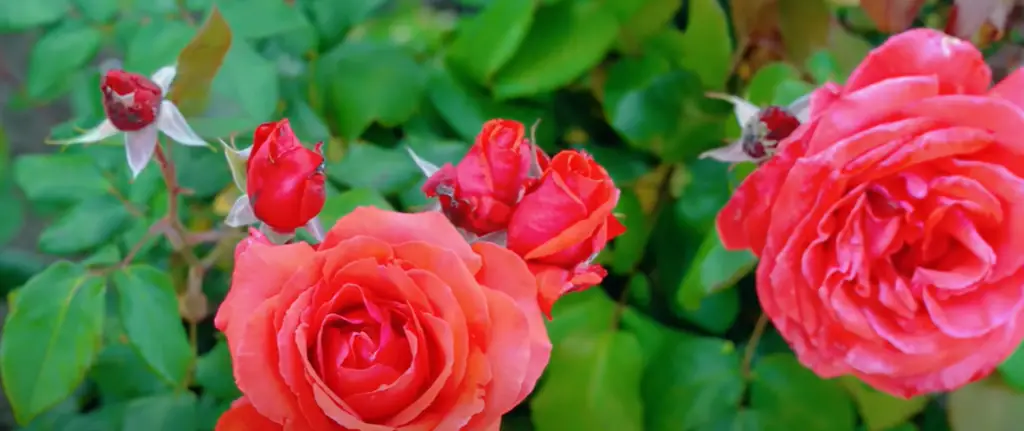
What Diseases Do Roses Have?
Rose plants are susceptible to a number of viral, bacterial and fungal diseases. Some of the most common diseases affecting roses are black spot, powdery mildew, rust, rose mosaic virus and crown gall.
- Black Spot is caused by a fungus (Diplocarpon rosae) which appears as irregularly shaped spots on leaves surrounded by yellow halos. The disease can spread quickly if left untreated, and appear as raised bumps on the stems of roses. To treat black spots, remove affected leaves from the plant and spray with fungicidal soap or copper-based fungicides.
- Powdery Mildew is a fungal disease which appears as white powdery spots on leaves, flowers and young shoots. The disease can spread quickly if left untreated, and infected leaves should be cut off and destroyed. To treat powdery mildew, spray affected plants with a fungicide containing sulfur or neem oil.
- Rust is caused by the fungus Phragmidium violaceum which appears as small reddish-brown spots on the undersides of leaves. As the disease progresses, the spots turn into yellow or orange pustules. To treat rust, prune away affected parts of the plant and spray with a fungicide containing copper sulfate.
- Rose Mosaic Virus is a virus which affects roses, causing mottled leaves and stunted growth. The virus can spread quickly if left untreated, so infected plants should be destroyed immediately.
- Crown Gall is caused by the bacterium Agrobacterium tumefaciens which appears as galls on rose stem and roots. To treat crown gall, prune away affected parts of the plant and spray with a fungicidal soap or copper-based fungicide. [8]
How to Extend the Roses’ Lifespan?
Cut flowers, particularly roses, can make a lovely addition to any home or create a special gift for someone you love. Roses are considered the gold standard of cut flowers; however, they don’t last very long and can begin wilting within just a few days. Luckily, there are many ways to extend the life of your roses, so that they stay fresh and beautiful for longer:
- Start with fresh flowers. If you’re buying roses from the store, look for ones that are not yet wilted or showing signs of age. Make sure to keep them refrigerated until you’re ready to display them in your home. [9]
- Trim the stems at an angle before putting them into a vase of water. This helps to maximize the amount of water the stem can absorb and helps to keep the roses looking fresh.
- Change the water every day, or at least twice a week, and add in a floral preservative if you have it on hand. This will help to prevent bacteria from growing in the vase which can make your flowers wilt more quickly.
- Keep your roses away from direct sunlight, heat sources, and drafts. These can cause your roses to dry out faster and lose their beauty.
- To keep the petals looking fresh, mist them with water every day or two. This will help to replenish any moisture that may have been lost due to air movement or temperature changes in the room.
- If you notice wilted petals, you can trim them off and change the water in the vase to help revive your roses. [10]
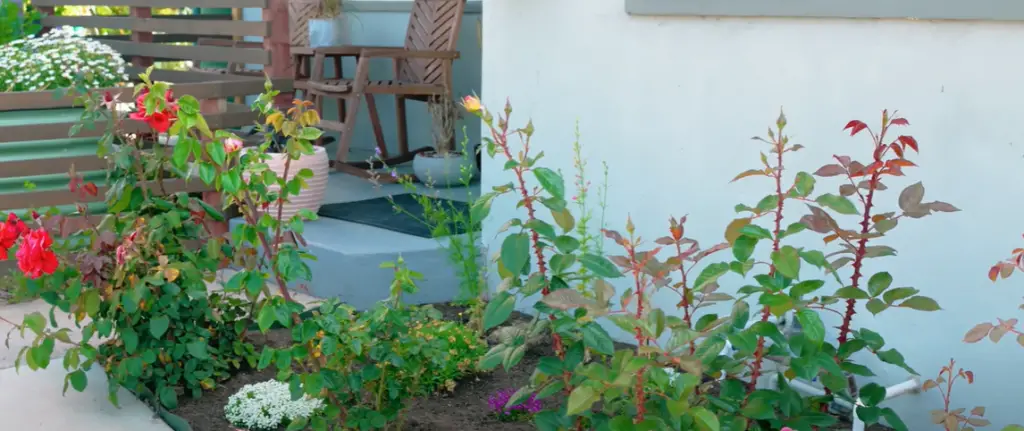
FAQs
Where is the best place to plant roses?
The best place to plant roses is somewhere with good airflow, at least six hours of sunlight each day and well-draining soil. To ensure that your roses thrive, it’s essential to prepare the area before planting by tilling the soil and adding organic matter such as compost or aged manure. Roses should also be planted in clusters for maximum impact. Soil amendments such as fertilizer can be added to the hole before planting. Additionally, roses should be planted at least two feet apart and surrounded by a thick layer of mulch for insulation during colder months. With proper care, your roses will provide years of beauty in your garden.
What climate do roses grow best in?
Roses thrive best in temperate climates with moderate temperatures and reasonable amounts of sunlight. They need a minimum winter temperature of –10°C (14°F) to survive, although some hearty varieties can handle even colder conditions. Rose bushes also require at least six hours of direct sunlight each day to bloom abundantly. Roses perform better in regions with rainfall rather than those that rely solely on irrigation. As with most plants, roses require good soil drainage to remain healthy and vigorous. They are not particularly drought-tolerant, so care should be taken to provide plenty of water during hot or dry periods.
Do roses grow better in pots or the ground?
Roses are a versatile flower that can be grown in many different ways. Whether they are planted in the ground or in a pot, roses require good drainage and plenty of sunshine. Potted roses tend to need more frequent watering than those planted directly into the ground, but careful watering habits can ensure healthy blooms regardless of where the rose is planted. With regular care and pruning, roses can be successfully grown in either environment.
When planting roses directly into the ground, it is important to choose a spot that receives at least six hours of sun per day and has good drainage for best results. The soil should also be amended with compost or other organic matter to enhance fertility and ensure adequate nutrition for your roses. Proper spacing between plants is also essential for adequate airflow and to prevent pests from becoming a problem.
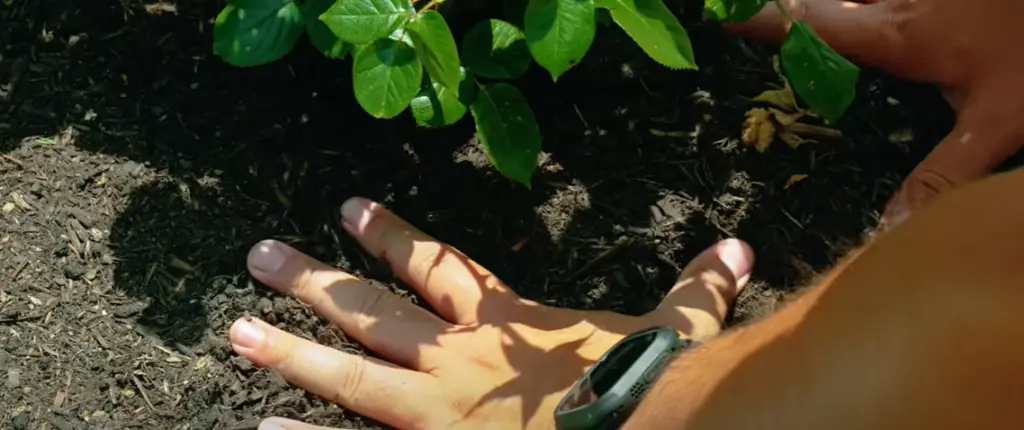
Do roses last longer in cold or heat?
Many of us have experienced the beauty of a single rose in full bloom and that beautiful scent that comes with it. However, when it comes to roses and their lifespan, temperatures can play an important role in how long they will last.
Due to their delicate nature, roses are best kept in cool temperatures since hot air will cause them to wilt faster. According to the Royal Horticultural Society, roses should be kept in temperatures between 10-15°C (50-60°F). Keeping them in colder temperatures can actually help preserve their life span and make them last longer.
In addition to temperature, moisture levels are also important for keeping your roses fresh. If you don’t want your beautiful blooms to die too quickly, make sure to keep the soil moist, but don’t over water it. Watering your roses once or twice a week should be enough.
Useful Video: Best Time to Plant Roses
Wrapping Up
In conclusion, the best time to plant roses really depends on where you live. If you’re in a colder climate, you’ll want to wait until late winter or early spring. But if you’re lucky enough to live somewhere warmer that doesn’t experience temperatures below freezing very often, then you’ll have more flexibility with when to plant your roses. Be sure to consult a local nursery for advice on when to plant based off of what rose varieties thrive in your particular area for optimal success! Also remember that, no matter how well-prepared and knowledgeable you are, growing roses can be difficult—but with dedication and learning from experiences, it can be one of the most rewarding experiences. Come springtime, why not try planting some roses and see how they fare in your own garden? After all, there’s nothing quite like being surrounded by the beautiful blooms!
References:
- https://a-z-animals.com/blog/most-popular-types-of-roses/
- https://www.countryliving.com/gardening/garden-ideas/g32146642/roses-types/
- https://www.gardendesign.com/roses/care.html
- https://eu.davidaustinroses.com/blogs/news/the-basics-of-growing-roses
- https://www.thespruce.com/how-to-plant-roses-1403055
- https://www.jacksonandperkins.com/when-to-fertilize-roses/a/when-to-fertilize-roses/
- https://www.bhg.com/gardening/how-to-garden/how-to-deadhead-roses/
- https://hgic.clemson.edu/factsheet/rose-diseases/
- https://www.goodhousekeeping.com/uk/consumer-advice/a559231/ways-to-make-your-valentines-day-roses-last-longer/
- https://www.wikihow.com/Make-Roses-Last-Longer










Leave a Reply
View Comments